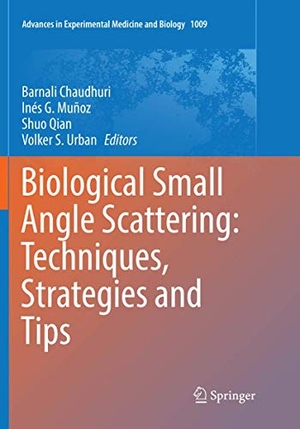
Biological Small Angle Scattering: Techniques, Strategies and Tips
- Springer Nature Singapore
- 2018
- Taschenbuch
- 280 Seiten
- ISBN 9789811355554
This book provides a clear, comprehensible and up-to-date description of how Small Angle Scattering (SAS) can help structural biology researchers. SAS is an efficient technique that offers structural information on how biological macromolecules behave in solution. SAS provides distinct and complementary data for integrative structural biology approaches in combination with other widely used probes, such as X-ray crystallography, Nuclear magnetic resonance, Mass spectrometry and Cryo-electron Microscopy. The development of brilliant synchrotron small-angle X-ray scattering (SAXS) beam lines has increased the number of researchers interested in solution scattering. SAS is especially useful for studying conformational changes in proteins, highly flexible proteins, and intrinsically disordered proteins. Small-angle neutron
Mehr
Weniger
zzgl. Versand
in Kürze